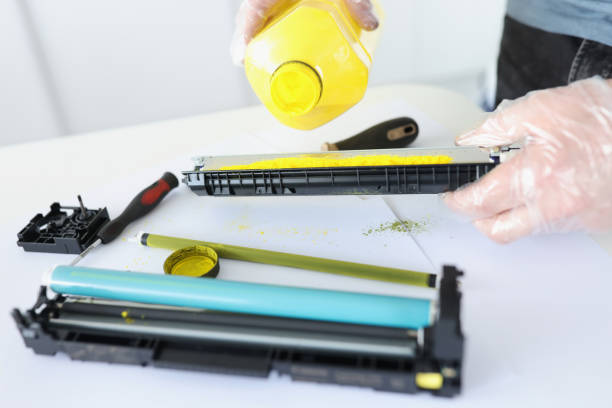Reliable office equipment is critical in today’s business environment. Companies that depend on documentation, shipping labels, invoices, or compliance records need printers in good shape. For businesses heavily reliant on documentation, shipping labels, invoices, or compliance records, an unexpected printer failure can stall operations and reduce customer satisfaction. This is why procurement managers, as well as IT coordinators, need to be prepared and proactive when it comes to replenishing HP printer supplies.
A well-planned supply strategy can aid in avoiding last-minute scrambles. In this guide, we’ll discuss the necessary components, smart stocking strategies, and how dependable toner and cartridge suppliers help sustain operational consistency for your business.
The Components of a Printing Setup and How to Avoid Common Pitfalls
Businesses need to stock more than just toner cartridges to avoid interruptions. A fully resilient setup often consists of several overlooked components.
- Toner cartridges: The main print supply. Always stock high-yield options to reduce the frequency of replacements.
- Drum units: While not as frequently replaced as toner, drums are critical for image transfer and consistent quality. Many users tend to overlook these until print defects appear.
- Fuser kits and rollers: Essential for smooth paper loading and clear output, especially in busy printing workplaces.
- Maintenance kits: Mitigating dust build-up and component wear along with preventing paper jams helps to keep the printer in optimal condition, and these kits help achieve that.
- Waste toner containers: These collect excess toner for specific printer models and need to be emptied or replaced after a certain period of time.
You can establish a balanced cost-effective and readiness planning by coordinating your supplies with your team’s actual usage patterns. Partnering with toner and cartridge suppliers also mitigates the risk of running short on critical items.
Importance of Stocking Strategy for Toner Cartridges in B2B Operations
Business operations often operate on higher volumes of printing than consumers and use those resources on a frequent and urgent basis. From printing hundreds of shipping labels every day and client contracts every week, even short downtimes lead to widespread operational delays.
- Bulk procurement saves money: There is usually a significant cost saving when purchasing toner and cartridges in bulk. B2B suppliers tend to have better pricing tiers for larger orders.
- Avoids unanticipated shortages: Printers tend to consume toner more quickly than expected, particularly during peak periods like month-end reporting or tax season.
- Facilitates remote and hybrid teams: For companies with branch offices or hybrid teams, standardized stock policies will ensure all locations are properly equipped and remain uniform.
Effective supply management minimizes waste, prevents excessive purchasing, and maintains a consistent workflow irrespective of fluctuations in printing volume.
Accurate Forecasting of Printer Supply Requirements
Stocking HP printer supplies comes with the challenge of determining how much inventory is sufficient. Having too little stock leads to downtime while excess inventory risks degradation of products, or unnecessary capital being locked up.
B2B teams can forecast by using this approach:
- Track usage: Monitoring print activity by department helps determine prospective requirements and prevent last minute purchases.
- Plan for unforeseen events: Always keep a buffer stock, especially of toner and critical components such as drums and rollers.
- Limit models used: Inventory control is simplified and SKU confusion is minimized when uniformity across several offices is achieved.
- Leverage vendor relationships: Forecasting needs based on historical order data makes reliable toner and cartridge suppliers invaluable. Their just-in-time restocking services also reduce stock holding costs.
In today’s fast-paced business climate, strategic supply planning provides a distinctive edge.
Unforeseen Expenses Due to Insufficient Printer Supplies
Having an empty printer supply may look like an unimportant problem, however, in B2B environments, the consequences are severe.
- Missed deadlines: In B2B settings, contracts, invoices and compliance documents have strict deadlines. Running low on supplies can result in penalties or client dissatisfaction.
- Decreased employee productivity: The need to search for a new printer or submit unnecessary IT tickets can waste employee time and money.
- Increased servicing problems: Using a printer devoid of necessary parts and supplies (like used drums or fusers) causes excess damage, leading to expensive servicing or replacement.
- Data protection risks: Irregular supply of office materials can lead to non-secured home printers and other locations being used for printing tasks.
Within this framework, HP printer supplies go beyond being IT operational tools and instead become integral components of making sure your business is running smoothly.
Selecting the Best Suppliers For Cartridges and Toners
Lastly, the stocking plan can either succeed or fail depending on the supplier you choose. A reliable supplier provides consistent quality, competitive pricing and responsive support.
Look for the following when choosing suppliers for toner and cartridges:
- Services tailored to business customers: Look for suppliers who offer bulk shipping, dedicated account management, sales support, and other specialized services for enterprises.
- Stock levels: Suppliers with large warehouse capacity tend to increase your supply chain efficiency and assist during demand surges.
- Quality assurance: Poor quality cartridges lead to excessive downtime with printers. Choose suppliers that meet ISO or industry-recognized quality standards.
- Contract terms: Subscription models or on-demand ordering could streamline inventory management and help with budgeting.
- Business adaptability: The supplier should be able to meet changing requirements as your business expands.
Access to a knowledgeable partner reduces strain on internal teams while ensuring a steady supply of critical printing supplies, such as toner and cartridges.
Conclusion
For B2B companies, printing is an essential component of business operations that go well beyond back-office functions. From managing an e-commerce warehouse to supporting a remote legal team distributed across multiple regions, consistently available HP printer supplies fortify daily operations.
Avoiding costly disruptions, improving employee productivity, maintaining client trust, and saving on operational costs can all be achieved by choosing the right toner and cartridge suppliers, as well as preventing outages and forecasting business needs. In a world where remote work, hybrid teams, and digital workflows are the norm, your organization’s printer supply strategy needs to be proactive and professional.






